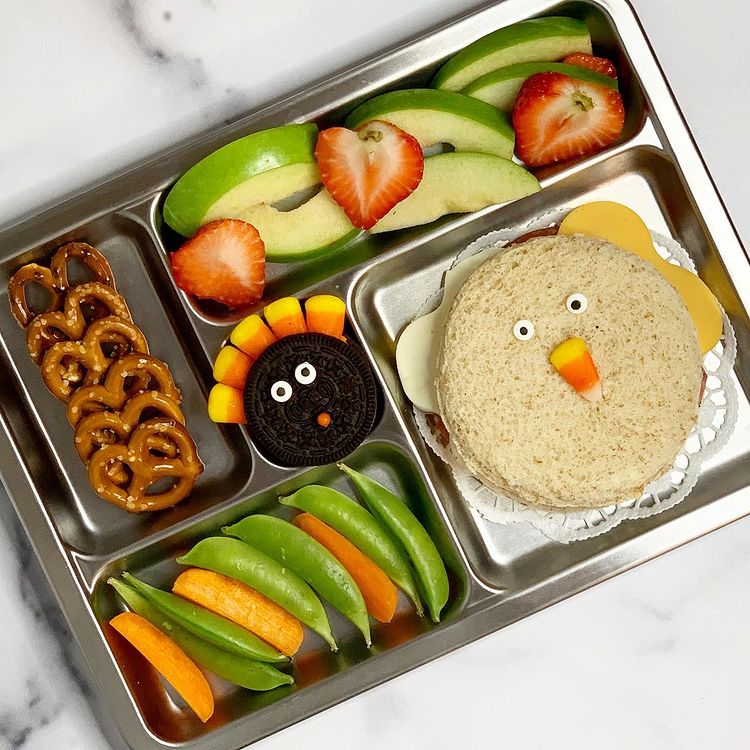Children are a blank slate and must learn - with the help of their parents - how to stay healthy and eat accordingly. The Internet often offers a variety of resources that either contradict each other or provide a flood of information that is difficult to keep track of. That’s why we gathered everything important in this article and hope to help you with successfully guarding your children’s health.
TIP 1: The first year
Many guidebooks point out the fatal consequences of wrong nutrition in the first year and state that different stages of development require different diets. Especially in the first year, you should keep an eye on several factors. It is recommended to leave out complementary food before the age of six months, because that way the child’s allergy risk is lowered. Generally, children should consume mostly natural foods. The reason for that is that aroma and artificial flavors shape the child’s likes and dislikes which makes it harder to differ between natural and artificial tastes later on. Genetically modified foods and too much sugar have negative effects on future preferences as well. Next, we should consider the topic of teeth. Sweet juices attack the enamel, so that new teeth aren’t optimally protected. A disrupted formation of teeth leads to a higher risk of jaw malposition and is thus another health-related issue for the child. Hence, you should control what your child eats and try to avoid the above-mentioned mistakes.
TIP 2: Child-friendly nutrition
The most important nutrients for children and adults are similar, and by that we mean natural protein, healthy fats and complex carbohydrates. While protein is important for bone formation, carbohydrates supply energy for the day. A great source of protein with lots of fiber and complex carbohydrates are lentils. You have to be careful with fats, but they are essential for a healthy diet as well. Not least because they are important for the absorption of fat-soluble vitamins. Children are often fed carrots, which are rich in vitamin A, but their nutrients can only be absorbed by the body when combined with fat. Omega 3 fulfills vital functions like supporting the immune system, which children have yet to build. Important foods are salmon, nuts and brussels sprouts.
Even if the healthy diet is followed for the biggest part, we have to remind you: children love sweet foods. This doesn’t mean that they should uncontrollably fill their bellies with sweets, but it is a known fact that a healthy diet can be promoted when children are also allowed to eat things that they love every now and then. Don’t forbid sweets as that will only lead to overconsumption. Sweets cannot be a taboo. A tip: combine fresh fruit with chocolate or put together a narrative on the children’s plates. This doesn’t have to be super lavish, but it will lead to acceptance and put a smile on your child’s face.

TIP 3: Learning to eat
It isn’t without reason that eating is declared a cultural good. Many rituals, routines and social events focus on eating. That’s why children’s eating habits often depend on the food culture of their country or the habits of their families. The social environment plays an important role for children and their eating habits. Whether in kindergarten, at home or with relatives, children like to imitate, and that gives the process of eating a psychological flavor. Similar to the ban of sweets, children often don’t want to eat foods that their parents don’t like. Some children even develop eating disorders, also called food-neophobia. This is to be distinguished from picky eating and if it lasts for several weeks, your child might need professional help. Here’s another tip: it’s a great idea to make your child’s plate “come alive” or to create a specific theme. Of course, this is quite time-consuming and doesn’t have to be done every single day. But it is worth a try especially for introducing new foods or recipes. Some guidebooks point out that parents should lead by example when it comes to eating habits. If you yourself eat healthily with little meat and lots of vegetables in your diet, your child will follow your example.
TIP 4: Sleeping habits
The assumption that the amount of sleep your children need increases with their age is not entirely correct. Children often have individual needs, and the duration of their sleep varies. Sleep is essential, as your brain needs it to process experiences and it also helps with digestion. It’s kind of like a break for you; hence, you should make sleeping a habit but not a compulsion. Especially in the evening, routines are very important. Sleep quality can be improved by cuddling, for example, and less excitement before going to bed. While you shouldn’t expose children to any sort of screens, reading a book can certainly be helpful. The calmer your evening routine, the better your child will sleep. Sleep disorders and insomnia are not only harmful for your child. Many studies show that restful sleep can prevent diseases such as overweight, diabetes and cardiovascular diseases.

TIP 5: Hygiene
For children, hygiene is solely an issue of routines. They should be taught to wash their hands before eating and after using the toilet from an early age. It is important to explain the reasons for doing this, so that they stick with these routines. It is best to watch their first tries, in order to correct them if necessary. Teach them to use warm water and soap. If they are already a bit older, you can talk about common mistakes. These include not washing the areas between the fingers, the thumb and the area around the life-line. In general, hands should be lathered for about 20 seconds to lower risks of infection.
TIP 6: Exercising
We probably don’t need to say too much about this topic. Exercising doesn’t harm your child nor you. Small walks are often already enough to stimulate your metabolism, support oxygen exchange and strengthen your immune system. It’s great to visit nearby playgrounds, meet with other parents or organize small games on a mini trip. Pro tip: Check out if there are opportunities for geocaching in your area; maybe your child can become a treasure hunter. This doesn’t only foster the body but the mind as well. It is important to make exercising a routine. The less frequently you go outside with your child, the less they will ask you for it.

Conclusion
When it comes to the health and nutrition of children, there’s a lot that can be done wrong, which is why these topics create some challenges for parents. In our article, we have given you many ideas and things to think about. While you should always contact your pediatrician first, some initiative and research cannot do any harm. Additionally, we also have an article for you that is all about your child’s first couple of months, in order to guarantee optimal support for your baby’s health.








